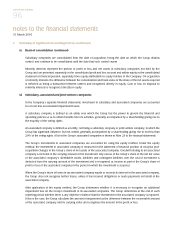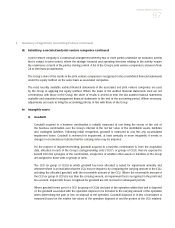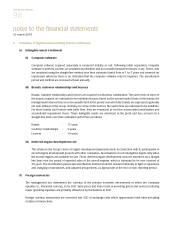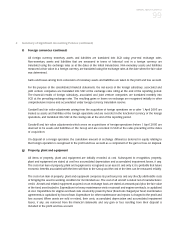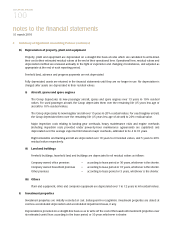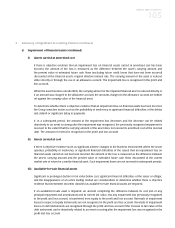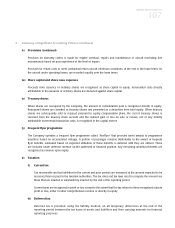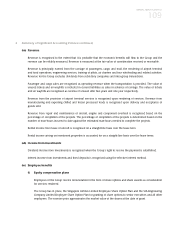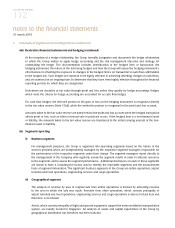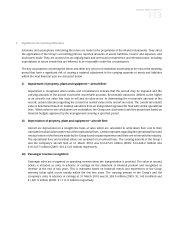Singapore Airlines 2010 Annual Report Download - page 106
Download and view the complete annual report
Please find page 106 of the 2010 Singapore Airlines annual report below. You can navigate through the pages in the report by either clicking on the pages listed below, or by using the keyword search tool below to find specific information within the annual report.SINGAPORE AIRLINES
104
notes to the financial statements
31 march 2010
2 Summary of Significant Accounting Policies (continued)
(o) Investments
Short-term investments held by the Group are classified as available-for-sale and are stated at fair values. Fair value
is determined in the manner described in Note 37(b). For unquoted short-term investments where there is no active
market and where fair value cannot be reliably measured, they are measured at cost less accumulated impairment
losses. The accounting policy for this category of financial assets is stated in Note 2(l).
(p) Cash and cash equivalents
Cash and cash equivalents comprise cash on hand, deposits in banks and short-term, highly liquid investments that
are readily convertible to known amounts of cash and which are subject to an insignificant risk of changes in value.
For the purpose of the consolidated statement of cash flows, cash and cash equivalents consist of cash on hand and
deposits in banks, net of outstanding bank overdrafts. The accounting policy for this category of financial assets is
stated in Note 2(l), under loans and receivables.
(q) Impairment of non-financial assets
The Group assesses at each reporting date whether there is an indication that an asset may be impaired. If any such
indication exists, or when annual impairment assessment for an asset is required, the Group makes an estimate of
the asset’s recoverable amount.
An asset’s recoverable amount is the higher of an asset’s or CGU’s fair value less costs to sell and its value-in-use and
is determined for an individual asset, unless the asset does not generate cash inflows that are largely independent
of those from other assets or groups of assets. In assessing value-in-use, the estimated future cash flows expected to
be generated by the asset are discounted to their present value. Where the carrying amount of an asset exceeds its
recoverable amount, the asset is written down to its recoverable amount.
For non-financial assets excluding goodwill and those with indefinite lives, an assessment is made at each reporting
date as to whether there is any indication that previously recognised impairment losses may no longer exist or may
have decreased. A previously recognised impairment loss is reversed only if there has been a change in the estimates
used to determine the asset’s recoverable amount since the last impairment loss was recognised. If that is the case,
the carrying amount of the asset is increased to its recoverable amount. That increase cannot exceed the carrying
amount that would have been determined, net of depreciation, had no impairment loss been recognised previously.
Such reversal is recognised in the profit and loss account unless the asset is measured at revalued amount, in which
case the reversal is treated as a revaluation increase.
(r) Impairment of financial assets
The Group also assesses at the end of each reporting period whether a financial asset or a group of financial
assets is impaired.




